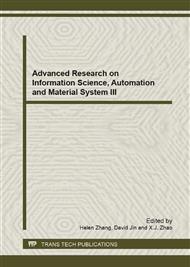p.175
p.181
p.186
p.190
p.195
p.200
p.204
p.208
p.212
Study on Dynamic Characteristics of the YC6108-G Hypocycloid Internal Combustion Engine Crankshaft Based on ADAMS
Abstract:
Damping and denoising of diesel engine is on the premise that we acquire the accurate excitation source information, and the main bearing force is major excitation source of diesel engine body vibration. When crankshaft rotating, elements of the diesel engine colliding each other, which resulted in slight deformation of the element and complicated applied force one another. It is difficult to meet the needs of calculation accuracy in structural dynamics analysis method of classical mechanics and trail analysis method is infeasible, so many-body dynamics method was put forward, the method could increase efficiently calculation accuracy, and the diesel engine excitation source of vibration and noise could be accurate predicted.
Info:
Periodical:
Pages:
195-199
Citation:
Online since:
June 2013
Authors:
Keywords:
Price:
Сopyright:
© 2013 Trans Tech Publications Ltd. All Rights Reserved
Share:
Citation:


